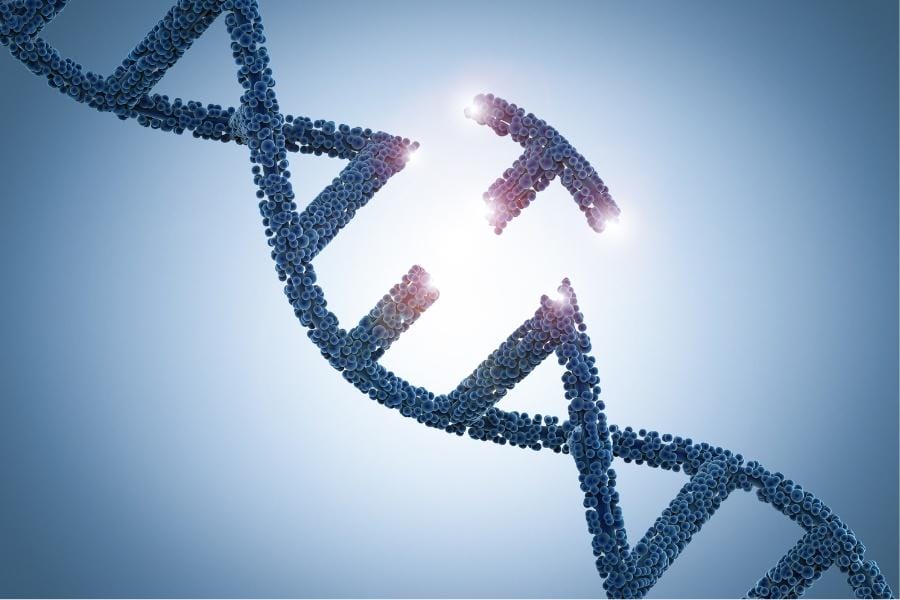Parkinson’s Disease vs Huntington’s Disease: Key Differences and Similarities
Parkinson’s disease and Huntington’s disease both impact movement and daily life, but they are distinct conditions with different causes and symptoms.
Parkinson’s disease typically leads to resting tremors and slow movement, while Huntington’s disease results in jerky, uncontrolled movements.
Understanding these differences is crucial for anyone looking to comprehend the challenges faced by those affected by these neurodegenerative diseases.
In this article, the nuances between Parkinson’s and Huntington’s will be explored, from symptom onset to treatment options.
By examining the unique aspects of each condition, readers can gain valuable insights into how they might affect individuals and families.
Key Takeaways
- Parkinson’s disease often presents with tremors and stiffness.
- Huntington’s disease is hereditary and leads to involuntary movements.
- Both diseases significantly impact the lives of those affected.
Overview of Parkinson’s Disease

Parkinson’s disease is a progressive neurological disorder that primarily affects movement. It occurs due to the loss of dopamine-producing neurons in the brain.
This section discusses the pathophysiology, symptoms, diagnosis, and treatment options available for this condition.
Pathophysiology
Parkinson’s disease arises from the degeneration of neurons in a specific region of the brain called the substantia nigra. These neurons produce dopamine, a chemical crucial for regulating movement and coordination. As these cells die, dopamine levels drop, leading to motor and non-motor symptoms.
The disease’s progression varies among individuals. Genetic factors and environmental influences may contribute, but the exact cause remains unknown. The loss of dopamine disrupts the normal balance of neurotransmitters in the brain, leading to characteristic symptoms.
Research has identified the role of Lewy bodies, which are abnormal protein deposits found in the brains of Parkinson’s patients.
Their presence indicates the disease’s progression, affecting both movement and cognitive functions.
Symptoms
Symptoms of Parkinson’s disease are diverse and can be classified into motor and non-motor categories.
Motor symptoms typically include:
- Tremors: Involuntary shaking, often starting in the hands.
- Bradykinesia: Slowed movement affecting daily activities.
- Muscle rigidity: Stiffness in limbs and neck, can also lead to difficulty in swallowing.
- Postural instability: Poor balance leading to frequent falls.
Non-motor symptoms may include:
- Sleep issues: Difficulty falling asleep or staying asleep.
- Mood disorders: Anxiety or depression can affect many patients.
- Cognitive changes: Difficulties with memory and attention often arise.
These symptoms can significantly impact quality of life, making early recognition and management crucial.
Diagnosis
Diagnosing Parkinson’s disease involves a detailed patient history and neurological examination. Healthcare providers assess motor functions and check for characteristic signs, such as tremors and rigidity.
There is no definitive test for Parkinson’s, but brain imaging techniques like MRI or PET scans may help rule out other conditions.
Doctors may also use the Unified Parkinson’s Disease Rating Scale (UPDRS) to evaluate the severity of symptoms and functional abilities. A diagnosis is often confirmed if symptoms improve with Parkinson’s medications, particularly levodopa, which increases dopamine levels.
Treatment Options
While there is no cure for Parkinson’s, treatment aims to manage symptoms and improve quality of life.
Medications are the primary treatment method. The most common are:
- Levodopa: Converts to dopamine in the brain, providing relief from motor symptoms.
- Dopamine agonists: These mimic dopamine effects, providing additional help.
Physical therapy is essential for improving mobility and balance. Occupational therapy can assist in daily activities.
In some cases, healthcare providers may recommend surgical options, such as deep brain stimulation. This involves implanting electrodes in specific brain areas to alleviate symptoms.
Regular follow-up with healthcare professionals is crucial for adjusting treatments as the disease progresses.
In Summary: Parkinson’s disease is caused by the degeneration of dopamine-producing neurons in the substantia nigra, leading to motor and non-motor symptoms that significantly impact quality of life. Diagnosis involves clinical assessment and neurological examination, while treatment focuses on symptom management through medications, physical therapy, and in some cases, surgical interventions like deep brain stimulation.
Overview of Huntington’s Disease

Huntington’s Disease is a genetic disorder that leads to the progressive breakdown of nerve cells in the brain. This condition affects movement, thinking, and behavior in affected individuals.
Genetic Factors
Huntington’s Disease is caused by a mutation in the HTT gene, which is located on chromosome 4. This mutation involves an expansion of the CAG repeat sequence, leading to the production of a faulty protein called huntingtin.
The inheritance pattern is autosomal dominant, meaning that an individual only needs one copy of the mutated gene from a parent to develop the disease. If a parent has the gene, there is a 50% chance that each child will inherit it. Genetic testing can confirm the presence of the mutation, allowing for early diagnosis and family planning.
Clinical Presentation
The symptoms of Huntington’s Disease typically appear between the ages of 30 and 50 but can develop at any age. The clinical presentation includes:
- Motor Symptoms: Involuntary movements known as chorea, muscle rigidity, and difficulty maintaining balance.
- Cognitive Symptoms: Problems with concentration, memory loss, and impaired judgment.
- Psychiatric Symptoms: Depression, anxiety, and mood swings are common in many patients.
These symptoms worsen over time, often leading to significant disability and requiring comprehensive care.
Diagnostic Criteria
Diagnosis of Huntington’s Disease involves a combination of clinical evaluation and genetic testing.
Doctors typically assess a patient’s medical history and symptoms alongside a neurological examination. Key diagnostic tools include:
- Family History: Identifying hereditary patterns can help in diagnosis.
- Genetic Testing: Confirming the CAG repeat expansion in the HTT gene is crucial.
- Imaging Tests: MRI or CT scans may reveal brain changes typical of the disease.
These criteria help differentiate Huntington’s from other neurological disorders.
Management Strategies
While there is currently no cure for Huntington’s Disease, several management strategies can help improve quality of life. Treatment focus generally includes:
- Medications: Drugs such as tetrabenazine can reduce chorea. Antidepressants can help manage mood disorders.
- Therapies: Physical, occupational, and speech therapy can support maintaining daily functioning.
- Support Systems: Involvement in support groups and counseling can help patients and families cope with the emotional aspects.
Regular follow-up with healthcare providers is essential to adjust treatment plans as symptoms change over time.
In summary: Huntington’s Disease is a genetic disorder caused by a mutation in the HTT gene, resulting in progressive neurodegeneration that affects movement, cognition, and behavior. Diagnosis involves clinical evaluation and genetic testing, while management focuses on symptom control through medications, various therapies, and support systems, as there is currently no cure for the disease.
Huntington’s Disease vs. Parkinson’s Disease: Comparative Analysis

The differences and similarities between Parkinson’s disease and Huntington’s disease are significant in various aspects.
These include genetic factors, progression of symptoms, and methods of treatment.
Genetic Differences
Parkinson’s disease often occurs sporadically, but genetic mutations can be a factor in some cases. Mutations in genes such as SNCA, LRRK2, and PARK7 play a role in hereditary forms.
In contrast, Huntington’s disease is primarily caused by a specific genetic mutation on the HTT gene.
This leads to a guaranteed inheritance pattern, meaning if a parent has the mutation, there is a 50% chance their child will inherit the disease.
The Huntington mutation results in the production of an abnormal protein that damages brain cells, particularly in areas responsible for movement and coordination.
Progression of Symptoms
Symptoms of Parkinson’s disease typically start gradually. Early signs include tremors, rigidity, and bradykinesia (slowness of movement).
Over time, individuals may struggle with balance and coordination issues. Cognitive decline may also occur in advanced stages.
Huntington’s disease progresses differently. Initial symptoms usually encompass uncontrolled movements (chorea), emotional disturbances, and cognitive decline. As the disease advances, the movements may become more pronounced and the ability to speak or swallow becomes difficult.
The timeline for progression varies; Parkinson’s may take years, whereas Huntington’s symptoms may emerge more rapidly after onset.
Treatment and Care Comparison
Treatment for Parkinson’s often includes medication, such as levodopa, which helps manage movement symptoms.
Physical therapy and lifestyle changes can improve quality of life. There are also surgical options, like deep brain stimulation, for advanced cases.
Huntington’s disease lacks a cure, making management critical. Medications can help with specific symptoms, such as mood swings or chorea. Supportive care, including counseling and occupational therapy, is essential as the disease progresses.
Both conditions require comprehensive care plans tailored to individual needs, focusing on symptom management and improving life quality.
Further Research in Parkinson’s and Huntington’s Disease
Research in Parkinson’s and Huntington’s diseases focuses on understanding their mechanisms and developing effective treatments.
Current studies aim to uncover new therapies and improve patient outcomes through various innovations.
Summary of Key Differences: Parkinson’s disease often occurs sporadically with some genetic factors, while Huntington’s disease is primarily caused by a specific genetic mutation on the HTT gene with a guaranteed inheritance pattern. Treatment for Parkinson’s focuses on managing symptoms with medications like levodopa and potential surgical options, whereas Huntington’s disease management emphasizes supportive care and symptom-specific medications due to the lack of a cure.
Current Studies on Parkinson’s Disease
Recent research on Parkinson’s disease emphasizes the loss of dopaminergic neurons. Scientists are exploring neuroprotective strategies and potential regenerative therapies.
For instance, gene therapy is being investigated to restore dopamine production, which could help alleviate symptoms.
Clinical trials are testing new medications, including drugs that target non-motor symptoms such as depression and sleep disorders.
Additionally, studies are focused on biomarkers that can predict disease progression and therapy response. This is crucial for personalizing treatment plans and improving patient care.
In recent years, there has been a growing interest in the gut-brain connection. Researchers are looking into gut microbiota’s role in Parkinson’s, hoping to identify ways to modify the microbiome for better management of the disease.
Recent Advances in Huntington’s Disease
For Huntington’s disease, significant advancements are being made in understanding its genetic basis and developing therapies. The focus has been on targeting the mutated huntingtin protein through techniques such as gene silencing.
Recent biological studies have explored antisense oligonucleotides, which directly inhibit the production of the malfunctioning protein.
These approaches aim to slow disease progression and minimize symptoms. Clinical trials are showing promise, with some therapies reaching late-stage testing.
Moreover, researchers are investigating the use of biomarkers to track disease progression and response to treatment. This research is vital as it can help in the evaluation of new therapies and improve patient management strategies.
By linking genetic insights with innovative treatment options, current research holds the potential to significantly alter the landscape of Huntington’s disease care.
Living with Neurodegenerative Disease

Living with a neurodegenerative disease can be challenging for both patients and caregivers. Support networks, resources, and strategies play a key role in managing daily life and ensuring a better quality of life.
Patient Support
Patients with neurodegenerative diseases benefit greatly from various support options. Support groups provide patients a chance to connect with others facing similar challenges. Sharing experiences can alleviate feelings of isolation.
Accessing professional counseling services is also vital. Therapists can help patients deal with emotional struggles related to their diagnosis. Many organizations, like the Parkinson’s Foundation and Huntington’s Disease Society of America, offer resources tailored to specific needs.
Physical therapy is an essential aspect of care. These specialists help maintain mobility and strength, which can reduce the progression of symptoms. Patients who actively engage in their treatment plans often report a more positive experience.
Caregiver Resources
Caregivers play an important role in managing the disease. It is crucial they find the right resources to support themselves as they care for loved ones. This may also include premium in home nursing care that is offered 24 hours a day. Educational materials about the diseases can empower caregivers with knowledge.
Respite care options provide temporary relief for caregivers. This allows them to take breaks and recharge. Additionally, local community centers often offer support groups designed for caregivers to share strategies and advice.
Technology can aid caregivers as well. Medication management apps help keep track of dosages and schedules. These tools reduce the stress of daily routines and enhance the care provided.
Quality of Life Considerations
Maintaining quality of life is vital for those living with neurodegenerative diseases. Regular physical activity tailored to the individual’s abilities can improve mood and mobility. Low-impact exercises, like walking or swimming, can be beneficial.
Nutrition also plays a key role in health. A balanced diet rich in fruits, vegetables, and whole grains can help manage symptoms. Consulting with a nutritionist can provide customized meal plans.
Mental health should not be overlooked. Activities like reading, puzzles, or engaging in hobbies can stimulate the mind. Staying socially active by visiting friends and family can enhance emotional well-being.
Through support and resources, both patients and caregivers can navigate the challenges posed by neurodegenerative diseases.
Get High-end Care for Parkinson’s or Huntington’s Disease
If your loved one suffers from Parkinson’s Disease or Huntington’s Disease, NurseRegistry can help.
NurseRegistry provides professional and licensed at-home nurses that provide exceptional 24/7 care.
Beyond exceptional private nursing care, our friendly and dedicated team takes the time to diligently match you with a nurse who is compatible with you based on skill level, personality, age, and gender.
Get the best home care for your loved one today. Click below to learn more about NurseRegistry.
People Also Ask About Differences Between Parkinson’s Disease and Huntington’s Disease
What is the difference between Parkinson’s and Huntington’s Disease?
Both conditions include motor symptoms that happen without control. In Parkinson’s disease, individuals might face stiffness and slower movements, whereas in Huntington’s disease, they may encounter cognitive and emotional challenges.
What are the common symptoms of Huntington’s Disease?
Common symptoms of Huntington’s disease include difficulty concentrating and memory lapses, depression, stumbling and clumsiness, and involuntary jerking or fidgety movements of the limbs and body.
Can Huntington’s be misdiagnosed as Parkinson’s?
If doctors aren’t on the lookout for Huntington’s disease, they might mistakenly identify it as another condition, particularly when it appears later in life. While Parkinson’s and Huntington’s might share some symptoms, a skilled neurologist can usually tell them apart quite easily.
The post Parkinson’s Disease vs Huntington’s Disease: Key Differences and Similarities appeared first on NurseRegistry.The post Parkinson’s Disease vs Huntington’s Disease: Key Differences and Similarities appeared first on NurseRegistry.
from NurseRegistry https://ift.tt/eziQlBR

Comments
Post a Comment